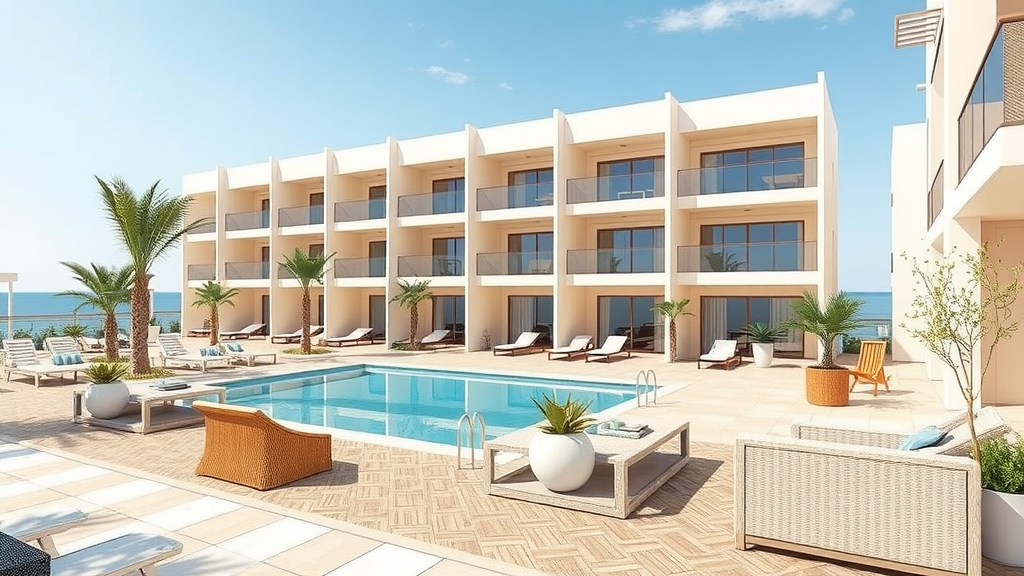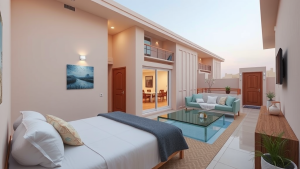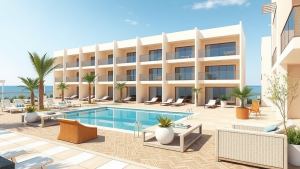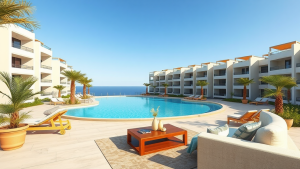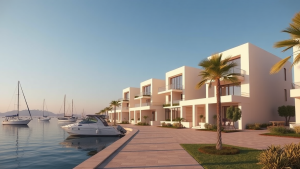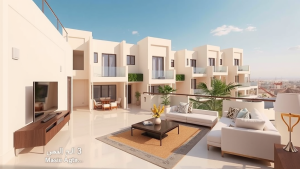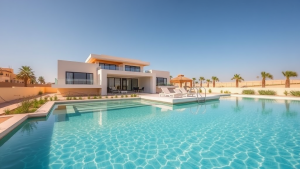Essential accessible home features for retirees: enhancing safety and comfort
As you step into retirement, creating a safe and comfortable home is essential. Many retirees face mobility challenges or health issues that can make everyday tasks difficult. This is where accessible home features become vital. Implementing these features in your home can enhance safety, improve comfort, and help you maintain independence. Let’s explore some essential accessible home features every retiree should consider.
Entryways and exits
The first point of accessibility is your home’s entryway. It’s important to have:
- Ramps: Replace steps with ramps for easy access. Ensure they have a gentle slope and sturdy handrails.
- Wide Doorways: Standard doorways can be too narrow for walkers or wheelchairs. Widening door frames can prevent unnecessary struggles.
- No-Step Entries: A no-step entry eliminates raised thresholds, making it easier to enter or exit your home.
Kitchen modifications
Your kitchen should be accessible and user-friendly. Consider these modifications:
- Adjustable Counter Heights: Install counters at different heights that can accommodate both sitting and standing positions.
- Pull-Out Shelves: These shelves make it easier to reach your items without stretching or bending over, improving safety and convenience.
- Easy-Grip Faucets: Install lever-style faucets that are easier to operate with limited hand strength.
Bathroom safety features
The bathroom can be one of the trickiest areas for retirees. Enhancing safety here is crucial. Key features include:
- Grab Bars: Install grab bars near the toilet and inside the shower. These provide support when standing up or moving.
- Non-Slip Flooring: Use textured or non-slip flooring materials to reduce the risk of slipping when wet.
- Walk-In Showers: Replace bathtubs with walk-in showers, which are easier and safer to enter into.
- Raised Toilet Seats: Consider installing higher toilet seats to make sitting and standing easier.
Living areas and bedrooms
Making living spaces comfortable and accessible is equally important. Here are some suggestions:
- Furniture Arrangement: Arrange furniture to allow for clear pathways. This prevents tripping hazards and allows easy movement throughout the space.
- Adjustable Beds: Invest in adjustable beds to change position for greater comfort without straining your body.
- Lighting: Ensure ample lighting throughout your home. Consider motion-sensor lights to help you navigate at night safely.
Additional features for safety
Beyond the main areas of the home, consider these additional features to boost safety:
- Emergency Alert Systems: Equip your home with emergency alert systems that allow you to call for help easily.
- Smart Home Technology: Implement smart devices to control lights, thermostats, and security systems by voice commands or from a smartphone.
- Comfortable Flooring: Choose low-pile carpets or non-slip vinyl floors that are gentle on the feet and prevent falls.
As you think about adapting your home for retirement, focus on features that enhance your safety and comfort. By incorporating these accessible home features, you can create a space that not only meets your needs but also fosters independence and a sense of well-being. Taking these steps can make a significant difference in your daily life, allowing you to fully enjoy your retirement years.
Always consider consulting with professionals who specialize in accessible design to ensure your home meets all your requirements. With the right changes, you can make your home a sanctuary where you feel safe, comfortable, and happy.
Budget-friendly modifications to make your home more accessible as you age
As you age, it’s important to consider how your living environment will continue to meet your needs. Making your home more accessible can greatly enhance your quality of life. Luckily, there are budget-friendly modifications that you can implement, allowing you to age comfortably in your space without breaking the bank.
Simple and affordable modifications
Accessibility doesn’t have to mean a complete renovation. Here are some cost-effective modifications that can help make your home more user-friendly as you age:
- Add grab bars: Install grab bars in the bathroom near the toilet and inside the shower. These can provide extra support when getting up or sitting down. You can find affordable options at local hardware stores.
- Non-slip flooring: Consider replacing slippery surfaces with non-slip options, especially in areas like kitchens and bathrooms. You can use adhesive non-slip mats as a temporary solution at a minimal cost.
- Improve lighting: Increase brightness in your home by replacing old bulbs with LED lights or installing brighter fixtures. Adequate lighting can help prevent falls, allowing you to move around safely.
- Easy-to-open doors: Replace traditional doorknobs with lever handles. Lever handles are easier to use, especially for those with arthritis or reduced hand strength.
- Floating shelves: Install floating shelves at accessible heights for your frequently used items. It minimizes the need to reach up high or bend down low, making everyday tasks easier.
Bathroom modifications
The bathroom can be one of the trickiest places to navigate as you age. However, there are several budget-friendly changes you can make:
- Shower chair: Purchasing a shower chair can provide stability while bathing. This prevents potential slips and adds an element of comfort.
- Handheld showerhead: A handheld showerhead allows you to bathe while seated. It’s also versatile and can be adjusted for easier use.
- Toilet riser: A toilet riser can make sitting down and getting up much easier. This simple addition can help prevent strain.
Kitchen adjustments
In the kitchen, there are several low-cost changes that can improve accessibility:
- Pull-out shelves: Install pull-out shelving in cabinets so you can easily retrieve items without straining or reaching.
- Accessible microwave: Position your microwave at waist height to prevent bending or reaching overhead. If necessary, you can use a sturdy table or cart to keep it at the right level.
- Easy-to-read labels: Use bold, clear labels on pantry items to make finding things simpler. This can also help improve your organization.
Outdoor accessibility
Making your outdoor spaces safe and accessible is just as important:
- Clear walkways: Ensure that all outdoor paths are clear from debris. This prevents tripping hazards and allows easy navigation through your yard.
- Install ramps: If you have stairs leading to your entrance, consider adding a ramp. This modification allows for easy wheelchair access and is safer than navigating steps.
- Raised garden beds: If you enjoy gardening, consider building raised garden beds. These can save you from bending over and reduce strain on your joints.
Budget tips for home modifications
Implementing modifications can seem overwhelming, but here are some budget tips that can help:
- Do it yourself: Consider DIY options for installing grab bars or shelves if you feel comfortable. There are plenty of online tutorials available.
- Shop second-hand: Check local thrift stores or online marketplaces for gently used accessibility aids.
- Consult community resources: Many local programs provide resources or financial assistance for home modifications aimed at seniors.
Making these budget-friendly changes can greatly enhance your home’s accessibility as you age. By taking a proactive approach and being mindful of your environment, you can continue enjoying your home comfortably and safely for years to come.
Creating an accessible home is essential for retirees who want to enhance their safety and comfort as they age. By focusing on key features such as wider doorways, slip-resistant flooring, and grab bars in bathrooms, you can significantly reduce the risk of falls and injuries. These modifications not only make daily tasks easier but also boost your overall quality of life, allowing you to live independently for longer.
When considering budget-friendly modifications, don’t overlook simple changes that can have a big impact. For instance, rearranging furniture for better mobility or utilizing adaptive devices can be cost-effective solutions. Many local organizations offer grants or assistance programs to help cover the costs of accessibility adaptations. Investing in your home now can yield long-term benefits, making it a more enjoyable and practical space for your golden years.
Ultimately, making your home accessible isn’t just about physical adjustments; it’s about fostering independence and dignity. You deserve a living environment that supports your needs and reflects your lifestyle. By prioritizing these features and modifications, you’re taking an important step towards a safer, more comfortable retirement. Remember, every small change can contribute to a brighter and more accessible future, ensuring you can enjoy your home to the fullest as you age gracefully.
16% off – studio apartment with swimming pool in Magawish Hurghada under 50k — family-friendly properties for german traders
18% discount – 5 bedroom standalone villa with swimming pool in hadaba Hurghada under 200k — stylish homes for german investors

